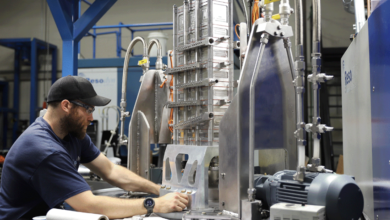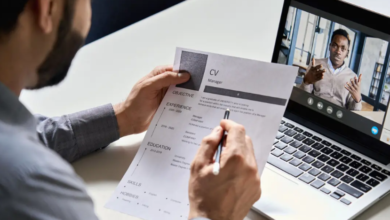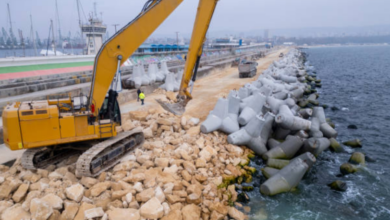Key Stages of the B2B Sales Funnel Explained

Navigating the complexities of business-to-business (B2B) sales requires a structured approach, and the B2B sales funnel provides a strategic framework to guide prospects from initial awareness to long-term partnership. Unlike B2C sales, which often prioritize quick conversions, B2B sales involve longer cycles, multiple stakeholders, and a focus on building trust. The funnel’s distinct stages—awareness, interest, consideration, intent, evaluation, purchase, and retention—each play a critical role in transforming prospects into clients. This article delves into these stages, offering a clear explanation of their purpose, strategies, and impact on driving successful B2B outcomes.
Sparking Initial Awareness
The journey begins with the awareness stage, where the goal is to capture the attention of potential clients who may not yet know your brand or solution. In B2B contexts, prospects are typically organizations or decision-makers seeking to address specific challenges, such as improving operational efficiency or meeting regulatory requirements. Effective strategies at this stage focus on visibility and education, positioning the business as a knowledgeable resource.For example, a company offering supply chain software might publish a blog post on industry trends or host a webinar on logistics optimization. These efforts attract prospects researching solutions, often through organic search, social media, or industry events. The key is to provide valuable, non-salesy content that resonates with the target audience’s pain points, laying the foundation for deeper engagement.
Cultivating Genuine Interest
Once prospects are aware of the brand, the interest stage focuses on nurturing curiosity and encouraging exploration. At this point, prospects are actively seeking information about potential solutions but are not yet ready to commit. The challenge is to maintain their attention while building credibility and trust.Content plays a pivotal role here. Whitepapers, case studies, or industry reports can showcase expertise and provide actionable insights. For instance, a cybersecurity firm might offer a downloadable guide on data protection best practices, appealing to IT managers concerned about compliance. Personalized email campaigns can further nurture interest, delivering relevant content based on prospects’ initial interactions, such as website visits or content downloads. By fostering engagement, this stage moves prospects closer to considering a specific solution.
See also: Blum Price Prediction: Decoding Market Trends and Forecasting Techniques
Deepening Engagement in the Consideration Phase
The consideration stage marks a shift, as prospects begin evaluating specific solutions to address their needs. In B2B sales, this phase is complex due to the involvement of multiple stakeholders—executives, managers, and end-users—each with unique priorities. The goal is to provide detailed, tailored information that demonstrates the solution’s value and differentiates it from competitors.Product demos, webinars, or free trials are effective tools at this stage. For example, a SaaS provider targeting HR departments might offer a live demo showcasing how its platform streamlines payroll processes, addressing both usability for HR staff and cost savings for leadership. Providing clear, accessible resources, such as comparison guides or ROI calculators, helps stakeholders align on the solution’s benefits, reducing friction as they move toward a decision.
Gauging Intent and Qualifying Leads
As prospects progress to the intent stage, they signal a stronger commitment to finding a solution, often through actions like requesting a quote, scheduling a consultation, or engaging with sales teams. This stage is critical for qualifying leads, ensuring resources are focused on prospects with genuine potential to convert.Lead scoring, enabled by CRM tools like HubSpot, can identify high-intent prospects based on behaviors such as frequent website visits or detailed inquiries. For instance, a manufacturing equipment supplier might prioritize a prospect who downloads a technical specification sheet and attends a product webinar. Sales teams can then engage with personalized outreach, addressing specific questions or concerns to maintain momentum and guide prospects toward the evaluation phase.
Navigating the Evaluation Process
The evaluation stage is where prospects rigorously assess the proposed solution, often involving detailed discussions, negotiations, and comparisons with competitors. In B2B sales, this phase can be time-intensive, as stakeholders scrutinize factors like cost, implementation, and long-term value. The funnel must provide robust support to address these complexities.Customized proposals, proof-of-concept trials, or stakeholder-specific content can facilitate decision-making. For example, a cloud services provider might offer a pilot program to demonstrate scalability for an enterprise client, while providing a detailed cost-benefit analysis for the CFO. Transparent communication and responsiveness are key, as addressing concerns promptly builds confidence and reduces the risk of prospects stalling or choosing a competitor.
Securing the Purchase Decision
The purchase stage is the culmination of the funnel’s efforts, where prospects finalize their decision and commit to the solution. In B2B sales, this often involves contract negotiations, legal reviews, and internal approvals, requiring close collaboration between sales teams and prospects. The goal is to streamline the process while ensuring all stakeholders feel confident in their choice.Clear, concise contract terms and flexible payment options can expedite this stage. For instance, a consulting firm might offer tiered pricing or phased implementation to accommodate a client’s budget constraints. Sales teams should also anticipate last-minute objections, providing data-driven answers or testimonials to reinforce the solution’s value. A smooth purchase process sets the stage for a positive client relationship.
Prioritizing Retention for Long-Term Value
The funnel doesn’t end with a sale; the retention stage is critical for maximizing client lifetime value and fostering loyalty. B2B relationships often extend beyond the initial purchase, with opportunities for renewals, upsells, or referrals. Effective retention strategies focus on delivering ongoing value and maintaining strong communication.Onboarding is a key component, ensuring clients fully understand and adopt the solution. For example, a software provider might offer training sessions and dedicated support to ensure seamless integration. Regular check-ins, performance reports, and opportunities for feedback further strengthen the relationship. By prioritizing client success, businesses turn one-time buyers into long-term partners, driving recurring revenue and advocacy.
Integrating Data for Continuous Improvement
Data is the backbone of an effective B2B sales funnel, providing insights to optimize each stage. Key performance indicators (KPIs), such as conversion rates, time spent in each stage, and cost per lead, reveal where the funnel excels or needs refinement. For instance, a high drop-off rate in the consideration phase might indicate that demos are too generic or fail to address specific pain points.Analytics tools, integrated with CRM platforms, enable businesses to track prospect behavior and test strategies. A/B testing email campaigns or landing pages can uncover what resonates with prospects, while feedback from sales teams can highlight common objections. By leveraging data, businesses ensure the funnel remains dynamic, adapting to market shifts and prospect needs.
Balancing Personalization and Scalability
An effective B2B sales funnel strikes a balance between personalization and scalability, addressing individual prospect needs while maintaining efficiency. Personalization might involve tailoring content to specific industries or roles, such as offering healthcare-specific case studies to hospital administrators. However, over-customization can strain resources, especially for businesses targeting large markets.Automation tools help achieve this balance, enabling scalable personalization. For example, marketing automation platforms can segment prospects based on industry or behavior, delivering customized emails without manual effort. This ensures the funnel remains efficient while providing the tailored experience B2B buyers expect, enhancing engagement across diverse audiences.
Adapting to Evolving Market Dynamics
The B2B sales landscape is constantly evolving, influenced by technological advancements, economic shifts, and changing buyer expectations. An effective funnel must be agile, incorporating new tools and strategies to stay competitive. For instance, the rise of AI-driven analytics allows businesses to predict prospect behavior, while virtual events have become a staple for engaging remote decision-makers.Staying attuned to industry trends ensures the funnel remains relevant. A company selling financial software, for example, might integrate webinars on regulatory changes to attract prospects navigating compliance challenges. By anticipating market needs, the funnel positions the business as a forward-thinking partner, ready to address emerging opportunities.
Sustaining Momentum Through Strategic Execution
The B2B sales funnel is a powerful tool for driving conversions, but its success depends on strategic execution across all stages. By understanding the buyer’s journey, leveraging data, and delivering value at every touchpoint, businesses can guide prospects from awareness to loyalty with confidence. As the B2B market continues to evolve, a well-executed funnel ensures sustained growth, fostering relationships that deliver long-term value and position the business as a trusted partner in a competitive landscape.




